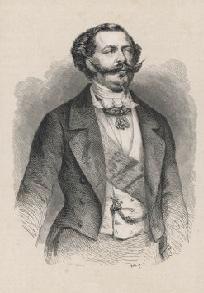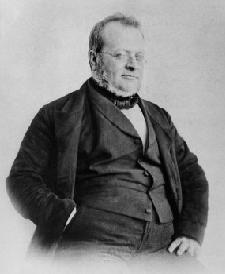
Candida Martinelli's Italophile Site

Main
Page This family-friendly site celebrates Italian culture for the enjoyment of children and
adults. Site-Overview
These
are links to my pages on Italy's various historical eras. A print image of tiny Napoleon Bonaparte,
sitting atop what is almost certainly a very short horse, leading his
soldiers into battle for the conquest of Europe. Click on the
image to read more about the French Revolutionary War and the Napoleonic
Era. Napoleon, the handsome (?),
Corsican, Italian-speaking, master administrator, who is now said to
have possible died from accidental arsenic poisoning from unsafe
drinking water on his island exile. That Italian unification began on
Sardinia is more than a bit amazing sounding if you've ever been to
Sardinia. I have, and the primitive albeit beautiful island seems
untouched by royalty for centuries. The most exotic thing on offer
is a look over at Corsica off the northern coast. There are lots
of primitive remains of previous civilizations. And there is, of course, Prime
Minister Berlusconi's vacation home, where he was injured in a
"friendly" gave of soccer with Britain's Prime Minister Tony
Blair this past summer, not long after a bomb was found and defused
nearby. Exciting days in Sardinia! Click on the logo above
to find out about the island and touring there. Click on the image above to go to
a Heraldry site (in French) that has an amazing collection of images of
Italian coats-of-arms, for families, regions, towns, royalty. The
image above is the coat-of-arms of the last descendant of the Medici who
passed away in 1737. The link is to the main
page. From there, click on the menu item 'Géographique', and then
select 'Péninsule italienne' to get the list of Italian coats-of -arms
categories. Heraldry
in Pre-Unification Italy The above link
goes to a page that describes the political regions existing in Italy
before unification and their heraldry. Interestingly, they also
provide the size of each group in population, percentage of total and
square kilometers. Click
on the image of Giuseppe Garibaldi to read the 'Economist' newspaper's
clear-eyed account of his 1000 man march to take the south of Italy for
the King. Cavour
is a name you come across everywhere in Italy. No town of any size
is without a Piazza Cavour or a Via Cavour, or a Mazzini and Garibaldi,
for that matter. Click on the image of Cavour to go to a fun website, in
Italian, dedicated to Cavour:
Cavour.com. They have a
running countdown on their main page to the 150th anniversary of the
unification of Italy. Map
and Chronology of Unity of Italy The
above link is to a page on the website of Robert Angelo, an
Italian-American. He offers a wonderfully concise list of events
leading to Italian unification.
The Pitti Palace and the Boboli Gardens beyond.
These are open to the public now, but were the private property of the
Duke of Florence at the time the poets Robert and Elizabeth Barrette
Browning were his neighbors. They lived at the far right of end of the
square. Many of Elizabeth's poems were written in sympathy with
Italian unification and served to build awareness and support abroad for
the cause. Click on the image to go to my page about them. Click on the text above
to read Mazzini's call-to-arms, or at least a call-to-revolution, for
Italians to emulate the French Republicans.
Descendents of Italians live all over the world.
There is a site that helps descendents obtain Italian
documents to help chart the family's history: Italiamerica.
Click on the banner to visit their site for information on the document
service and a lot more! And check out my page dedicated to Hyphenated-Italians. Here's a caricature made at the time of unification, showing
Garibaldi putting the last part of Italy together in the 'boot' of King
Vittorio Emmanuele II. It
could be said that the drive for the national unification of Italy
began with Napoleon’s regional administrations and the French
Revolution’s ideals of Liberty, Equality, and Fraternity, which were
inspired by the successful American Revolution which began in 1776,
which was in turn inspired by many French and English philosophers.
The
average European began to accept that: a
national government might be able to better their lives, and
that by joining together, people could demand more freedoms and
equality and enjoy more friendly relations with their neighbors.
The
mindset was ripe for the liberal and nationalistic changes to come. When
Napoleon was defeated, representatives of the major European powers
presided over the Congress of Vienna in 1815 to put Europe back
together again, and to get rid of those anti-monarchical and
anti-aristocratic ideas of Liberty, Equality, and Fraternity.
Part
of the agreement ceded the Veneto and Lombard regions of Italy to Austria.
This just added to the patchwork quilt that was Italy at the
time. Austria also
controlled Sicily and Southern Italy, and several Central Italian
regions. The Pope
controlled regions in Central Italy, and Rome, and his territory was
defended by French soldiers. The
only independent regions of what is today Italy were under King
Vittorio Emmanuele II who controlled Sardenia and Piedmont, Savoy
and Nice. The King desired Italian unification with himself as
it’s liberal-minded monarch.
He
saw his chance after the failure of the Carbonari revolts in
1848, and the resulting torture, death and prison terms for
thousands of sympathizing Italians.
Winning over the hearts and minds of all Italians was an easier
task with emotions running so high.
The
King formed a constitutional monarchy to rule over his
territories, that relied on a parliament of appointed and elected
representatives. The
King found the perfect partner in Camillo di Cavour, who became
his prime minister in 1852. Together
they instituted constitutional reforms of such great economic and social
success, that all of Italy wanted to join together under the Sardinian
King. Cavour
was a realist who recognized that the foreign powers would never freely
give up their Italian regions, no matter what the local people said or
did. So using
statesmanship, Cavour found foreign allies to support the cause
of Italian unification.
He
courted the favor of France and England, and then found support in
Napoleon III of France who agreed to assist the fight against the
Austrians in exchange for the French-speaking regions of Savoy and Nice.
Together they forced Austria to surrender Lombardy, which
was absorbed into the Kingdom of Sardinia. This
success was the catalyst for the subsequent unification.
Once people saw that it could happen, and that there was a viable
government under which they could unify, they joined the cause
whole-heartedly. Nationalist
revolutionaries took control of much of the Papal States,
and an election there acted as a referendum, showing the will of the
people to be united with the Kingdom of Sardinia. The King absorbed the new regions, and Cavour’s foreign
allies quickly recognized the enlarged Kingdom, stopping any opposition
to the move. But
it was an Italian army that liberated Southern Italy, the
so-called Two Sicilies, from the Austrian controlled Bourbon dynasty.
In 1861, Garibaldi’s Red Shirts began with 1,000 men,
but his army grew as locals joined them, donning home-made red shirts as
their uniform. As
his troops advanced, there was some fighting, but many of the enemy
armies either defected or laid down their arms as the Red Shirts
advanced. They took Sicily
and then crossed over to Calabria and made their way to Naples,
where they declared their victory. Mazzini,
Garibaldi’s mentor, was a more advanced political thinker who worked
for the formation of a democratic republic, but the force of history was
against him, at least for the moment, so Italy became a constitutional
(limited) monarchy when Garibaldi’s forces surrendered the newly won
regions to the King of Sardinia. The
official formation of the Kingdom of Italy took place in March of
1861, under King Vittorio Emmanuele II.
The country became complete over time.
In
1866, again working with allies, Italy regained the Veneto from
Austria. And
in 1870, when French troops were redeployed elsewhere, Italian
troops took Rome from the Pope, leaving only the Vatican City to the
Pontiff. The
Trentino and Trieste regions were ceded to Italy at the end of World
War I in 1918 in return for their fighting with the allies.
Italy
today is comprised of 20 regions, 94 provinces, and 8090
communities. The head of state is the President of the Republic, but to
make this complicated for foreigners, the Prime Minister is called the
President in Italian (Presidente del consiglio). An
interesting twist to history happened after the end of World War II, on
October 5, 1954. Trieste was taken from Yugoslavian control where it
had ended up after the war and again returned to Italian control by the
allies after violent protests by the locals who swore to defend their
‘Italian-ness’ to the death. The
50th anniversary was celebrated recently throughout Italy,
one of many slogans being ‘A Great History; One Italy’, showing just
how recent Italian Unification is in the hearts and minds of Italians. The
Pope had been having conniption fits all through the process of
Italian unification, but when he was left with only the Vatican City, he
really got angry. He
excommunicated just about everybody, again, this is after he earlier had
said that any Italian supporting unification was a sinner.
Then he pretended to be a prisoner in the Vatican City, hoping to
get sympathy and support from Catholic countries around Europe. It
didn’t work, and finally in 1929, the Fascist dictator Benito
Mussolini made a deal with the Pope, paying him reparations for his lost
territory, and letting the church determine social laws in Italy.
This added legitimacy to Fascism and Mussolini, and the close
association between the church and Fascism is certainly a black stain on
the church's history as dark as the Inquisition's stain. This
deal with Mussolini is why in Italy, today, if a father moves out of his
conjugal home, he’s breaking the law and can be arrested. It
makes you understand better why Italy was so quiet recently, when other
European countries were bad-mouthing socially conservative Turkey’s
eventual entry into the European Union. Immediately
after unification things did not go well, mainly due to two
conflicting strains in policy. One
faction pushed for Italy to become a world power by building up her
military and navy, and sending them out to conquer colonies.
The
other faction said that before becoming a world power, Italy had to
put her house in order. That
meant modernizing the backward country through agricultural reforms,
national education programs, creating efficient local and national
administrations, collecting taxes, and providing security throughout
the new country. Italy
tried to do both, splitting the little financial capital it had, and
achieving neither goal in any great measure.
However,
they did start a war with a weak Turkey and took away
parts of the crumbling Ottoman Empire.
Their victory encouraged others to do
the same, provoking a chain reaction of Balkan wars whose waging and
outcomes are still being avenged today.
The
resulting chaos and poverty in Italy, together with extremely
high birth rates, lead to massive emigration, mainly to Latin
America and North America. Next Section: Fascism and the World Wars
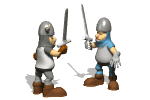
Italian
History
![]()
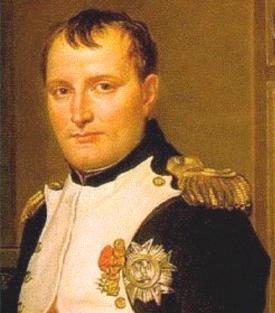
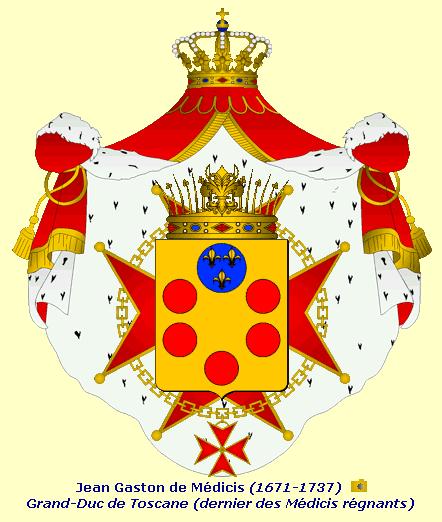

Italian
Unification
